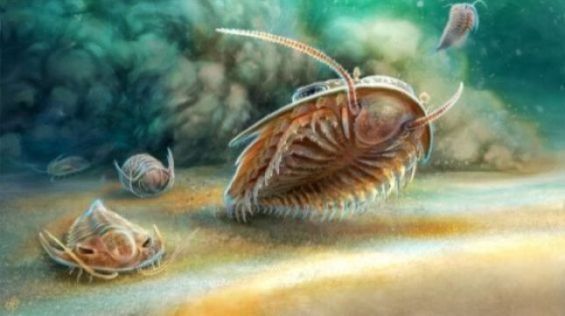A team of researchers from the University of Poitiers, led by Professor Abderrazak El Albani, has recently published an article in the prestigious American journal Science, reporting the discovery of two new species of trilobites in Morocco, preserved in exceptional condition.
According to a press release from the scientific team coordinated by Professor El Albani, a teacher-researcher at the Institut de Chimie des Milieux et Matériaux in Poitiers, these fossil arthropods, found petrified in their final positions, lived in an ecosystem that existed 515 million years ago. They were discovered in volcanic ash layers at Aït Youb, a marine «Pompeii» in the Souss-Massa region.
«This discovery demonstrates for the first time the essential role of subaqueous volcanic ash deposits in fossil preservation», said Professor El Albani. «It also highlights the crucial importance of exploring volcanic underwater environments».
He further explained, «The non-destructive imaging technique, high-resolution X-ray micro-tomography (XRµCT), is a powerful tool for observing fossilized objects in very hard rock in 3D, without the risk of altering them. By digitally filling in the voids left by the organisms, we were able to create casts of the extinct bodies with a striking level of detail».
«Thanks to this discovery», he added, «pyroclastic deposits should become new targets for study, given their exceptional potential for trapping and preserving biological remains, even soft ones, without the degradation that usually leads to incomplete or destroyed specimens. This opens up new windows on our planet's past».
Fossils from a volcanic ash bed
The research team explained that volcanoes located at the boundaries of tectonic plates are known for their explosive, large-scale eruptions, which can generate several tens of cubic kilometers of matter. These eruptions can trap contemporary life almost instantaneously, preserving under their ashes the evidence of entire civilizations, such as those of Santorini and Vesuvius.
They claim that with over 22,000 species discovered spanning the Paleozoic era (539 to 252 million years ago), trilobites are arguably the best-known fossil invertebrates. While their calcite exoskeleton gives them a high fossilization potential, making them abundant in the fossil record, their non-mineralized appendages and internal organs are known from only a limited number of specimens.
At Aït Youb, 515 million years ago, during a volcanic eruption, the living organisms present were buried by fiery clouds. Biological tissues were then consumed by the intense heat, leaving only cavities in the solidified ash: the molds of the organisms.
This study, the press release adds, sheds new light on the anatomical organization of trilobites, particularly the cephalic part. It reveals for the first time in this class of fossil arthropods the presence of a labrum, a soft mouthpart that acts as an upper lip in modern euarthropods, thus resolving a debate that has persisted for over a century.
Given the global importance of the site studied, it would be crucial to protect it by classifying it as a UNESCO World Heritage Site, the press release concludes.





 chargement...
chargement...













